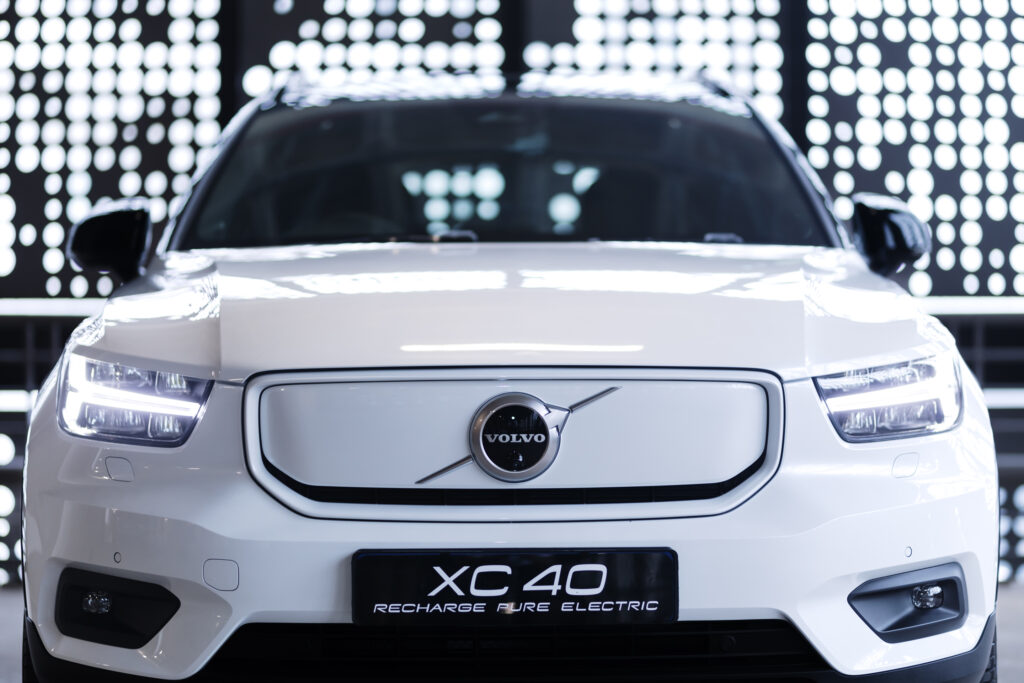The premium Swedish manufacturer’s global plan is to move to a fully electric car company by 2030.
The highly anticipated Volvo XC40 Recharge was launched at a media event in Johannesburg last week. Volvo’s first electric vehicle was unveiled globally in 2019, but because of delays last year, it arrived only this month.
The premium Swedish manufacturer also announced its plans to offer three stages of electrification locally through a line-up of full electric, plug-in hybrids and mild hybrids. Its global plan is to move to a fully electric car company by 2030.
Managing director of Volvo South Africa, Greg Maruszewski, says its mild hybrid boasts reduced tailpipe emissions, improve economy, and have a stronger on-road performance, making it an ideal stepping stone to its plug-in hybrid, which adds the major advantage of a pure-electric driving mode, and, ultimately, to its all-electric offering.
“In short, our completely renewed line-up covers all of the electrification bases,” Maruszewski said.
The XC40 Recharge is unique for a couple of reasons: it is sold exclusively online through the myvolvo.co.za website and cannot be purchased physically through a dealership; it is also the first car to run natively on Google.
Tech specs
The XC40 ships with an Android-powered infotainment system, complete with Google apps such as Maps, Assistant, and the Play Store. Other apps loaded on the vehicle included Spotify, radio, and Bluetooth media players, as well as Volvo apps like car status, range assist and a user manual.
The Play Store currently offers a limited selection of apps; it includes mostly radio, podcasts, news and music-related apps.
The system settings are familiar if you use an Android smartphone and allow you to access settings for driving, charging, sound, connectivity, controls, apps, system, and so on, just like a mobile device.
In other markets, the vehicle ships with an embedded SIM (eSim) so that a smartphone does not need to be paired to access Google Maps or Assistant. However, the South African market is yet to receive this feature, which is part of a digital service package.
Volvo South Africa told the Mail & Guardian that it was looking to release the eSIM in markets outside Europe in the second half of this year. It will be made available through an over the air update. Until that happens, drivers will need to pair their phones to the car to access some form of data connection to use Google Maps.
At the launch event, the vehicles were equipped with MiFi dongles for connectivity. The company also recommends the user download Maps for offline use ahead of travelling.
 Volvo_XC40P8Recharge
Volvo_XC40P8Recharge
What you get
The model we drove at the local launch is the XC40 P8 Recharge with a total output of 300kW and 660Nm of torque that accelerates from 0-100km/h in 4.9 seconds. It has a 78kWh battery capacity that promises a 418km range from a single charge.
Typical charging using an 11kW wallbox charger at home will take between eight and 10 hours to get from zero to 100%. If the fastest 150kW DC charger is used, it will take about 40 minutes to get to 80%.
The XC40 P8 Recharge costs R1.2-million and includes a “care package” as standard. This comprises a home wallbox charging station plus installation, and an additional cable for public charging, valued at about R80 000. It also includes a five-year maintenance and warranty plan, and comprehensive insurance for the first three years.
Interestingly, Volvo will offer all EV customers the use of an XC40 combustion engine for a maximum of two weeks a year during the first three years, to use for long distance trips or any other reason.
How it drives
We got to drive the P8 briefly around Johannesburg for a quick half an hour stint during Sandton traffic. The sage green is eye-catching and comes with all the comforts and premium finishes you’d expect from Volvo. You’re greeted with the signature nine-inch touchscreen infotainment display, through which all your interaction with the vehicle takes place, finished off with Harmon Kardon speakers.
Interacting with the car using voice commands feels natural, as if you’re speaking to one of your home smart speakers, with the advantage that Google Assistant understands South African accents.
Unlike some of the other electrics we’ve driven, there are no typical modes such as eco, sport or individual that you can rotate between at a press of a button. There is one main driving mode, with a one-pedal driving setting that you can toggle. This offers an aggressive regenerative braking mode that requires getting used to, which I soon turned off.
However, in the absence of the various driving modes, the vehicle gives you a range assistant app to help you adapt as a first time electric vehicle driver. It will show you the outputs for speed, driving style and climate, how these affect your range, and tips on how to prolong the battery.
The digital cockpit offers graphics, display themes, and options on what you want to prioritise: Google Maps; regeneration, power capacity, and energy levels; and charging info.
The Volvo app will let users monitor and track charging times, view battery status, pre-climatise the vehicle, and schedule charges.
Volvo has rolled out charging stations at its flagship dealerships, but is relying on existing public infrastructure, rolled out primarily by GridCars, for customers to recharge when not at home. The company currently has no plans to expand on additional chargers outside its dealerships.